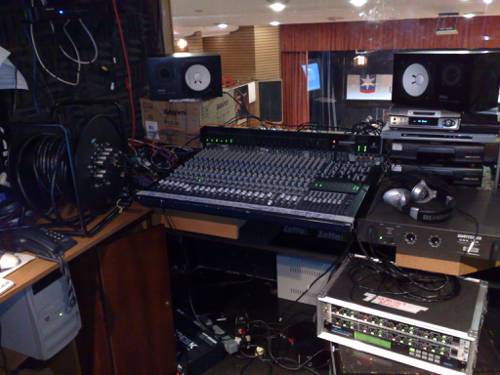
FAQ About Influence of Sound Design in Immersive Theater

What is immersive theater?
Immersive theater is a form of theatrical performance that removes the traditional separation between the audience and the performers. Instead of viewing the action from a distance, the audience members become part of the environment and sometimes interact with the performers and the narrative. This format often involves exploring a space at one's own pace or following specific characters around to experience the story from various angles.

How does sound design differ in immersive theater compared to traditional theater?
Sound design in immersive theater plays a crucial role in building the atmosphere and narrative. Unlike traditional theater, where sound is directional and often focuses on supporting the performance on stage, immersive theater uses sound to create a surrounding auditory landscape, influencing how the audience perceives and experiences the environment. Sound can originate from multiple locations within the venue, leading to a more dynamic and engaging experience.

Why is sound design important in immersive theater?
Sound design is essential in immersive theater because it enhances realism and immersion within the performance. It helps establish the mood, directs audience attention, and adds depth to the storytelling by supporting the narrative themes. Through ambient sounds, music, and sound effects, designers shape the audience's emotional and sensory experience, making them feel as though they are part of the world being created.

What are some techniques used in sound design for immersive theater?
Sound designers for immersive theater use various techniques such as surround sound systems, binaural recording, and site-specific audio. These methods allow them to create an auditory experience that aligns closely with the physical space and narrative. Spatial cueing, where sounds change based on audience movement or perspective, and the integration of live sound effects are also common techniques that enhance the authenticity of the experience.

Can you give an example of a famous immersive theater production with notable sound design?
One of the most renowned immersive theater productions is Sleep No More by Punchdrunk. Its sound design is a key component that enhances the experience by guiding the audience through different scenes and settings. The use of ambient soundscapes and strategically placed speakers throughout the performance space creates a haunting and immersive environment that complements its narrative, inspired by Shakespeare's Macbeth.

How does sound contribute to storytelling in immersive theater?
In immersive theater, sound contributes to storytelling by creating a sense of place and time, reflecting characters' internal states, and guiding the audience through the narrative. Audio cues can indicate a transition in scenes or signal an approaching climax, enhancing the storyline without the need for traditional dialogue. Soundscapes provide context and mood, helping audiences to interpret the unfolding action emotionally and cognitively.

What sensory effects can be achieved through sound in immersive environments?
Sound in immersive environments can evoke a variety of sensory effects, such as creating an illusion of space and distance, simulating environmental conditions like rain or wind, and producing psychological effects that can induce feelings of tension, excitement, or tranquility. By using sound to modulate the audience's sensory input, creators can craft a highly engaging and believable experience.

How do sound designers work with other members of the theater team in immersive performances?
Sound designers collaborate closely with directors, playwrights, actors, and set designers to ensure that the soundscape supports and enhances the overall vision of the production. They may work with choreographers to time sound cues with movements or with lighting designers to create synchronized effects. This interdisciplinary approach ensures that sound design is fully integrated into the immersive environment, enhancing the coherence of the experience.

What equipment is typically used in sound design for immersive theater?
Sound design for immersive theater often involves specialized equipment such as wireless microphones, multi-channel audio systems, portable speakers, and computer software for sound editing and playback. These tools allow designers to create and manipulate complex soundscapes that can change dynamically in response to audience movement and interaction within the space.

How does audience interaction influence sound design in immersive theater?
Audience interaction plays a significant role in shaping sound design in immersive theater. Designers may create responsive soundscapes that change based on audience movements or actions, using sensors and interactive technologies. This interactivity ensures that each audience member has a unique auditory experience, which can enhance engagement and make the performance feel more personalized and alive.

Are there challenges specific to sound design in immersive theater?
Challenges in immersive theater sound design include ensuring sound consistency across different areas of the performance space, managing potential technical failures, and maintaining a balance between sound clarity and environmental noise. Sound designers must also consider the variability in audience positions and interactions, requiring flexibility and adaptability in sound planning and execution.

How has technology impacted sound design in immersive theater?
Technology has greatly expanded the possibilities for sound design in immersive theater. Advances in digital sound processing, spatial audio, and wireless communication technology allow for more sophisticated and responsive soundscapes. These technologies enable designers to create sounds that can adapt to changes in the environment and audience interaction, thus enhancing the immersive experience.

What is binaural audio, and how is it used in immersive theater?
Binaural audio is a method of recording sound that uses two microphones, placed at an ear's perspective, to create a 3D stereo sound sensation for the listener with headphones. In immersive theater, binaural audio is used to simulate realistic sound environments, making listeners feel as if they are physically present in the scene. This technique enhances immersion by providing a more intimate and directional audio experience.

Can sound design influence audience emotions in immersive theater?
Yes, sound design can significantly influence audience emotions in immersive theater. By manipulating sound elements like pitch, volume, tempo, and rhythm, designers can evoke specific emotional responses. For example, slow and low-pitched sounds may induce sadness or suspense, whereas fast-paced and high-pitched sounds can create a sense of urgency or excitement.

What role does ambient sound play in immersive theater?
Ambient sound plays a crucial role in immersive theater by providing a continuous auditory backdrop that helps establish the setting and mood. It can subtly suggest place and context, such as the sounds of a bustling city or a serene forest, and helps maintain engagement when other narrative actions are not at the forefront. Ambient sound can enhance realism and aid in seamless transitions between scenes or locations.

How are environmental sounds integrated into immersive theater productions?
Environmental sounds are integrated into immersive theater productions to enhance the realism and believability of the setting. This integration can be achieved through recorded soundscapes, live sound effects, and interactive audio elements that respond to audience movements. Sound designers often collaborate with directors to ensure environmental sounds complement the visual and thematic aspects of the production.

How does the spatial arrangement of sound affect the immersive theater experience?
The spatial arrangement of sound is crucial in immersive theater, as it affects how the audience perceives and interacts with the environment. By strategically placing speakers and using spatial audio techniques, sound designers can create a 3D soundscape that envelops the audience, thereby enhancing the sense of immersion. This spatial sound can guide attention, suggest movement, and delineate spaces within the performance.

What is the future of sound design in immersive theater?
The future of sound design in immersive theater is likely to involve further integration of advanced technologies such as augmented reality audio, more sophisticated spatial audio systems, and AI-driven soundscapes. These technologies will enable even more personalized and interactive auditory experiences, pushing the boundaries of how audiences engage with immersive narratives.

Is live sound mixing used in immersive theater?
Yes, live sound mixing is often used in immersive theater to adapt the auditory environment in real-time. This allows sound designers to react to audience interactions and make adjustments as needed to maintain the desired atmospheric and emotional impact. Live mixing ensures that changes in dynamics, volume, and sound effects align with the unfolding narrative and audience presence.

What are the educational pathways for a career in sound design for immersive theater?
A career in sound design for immersive theater typically starts with education in sound engineering, audio production, or theatrical design. Aspiring sound designers may pursue degrees in these areas and gain experience through internships or assistant roles in theater productions. Continuing education in emerging technologies and immersive media also benefits those aiming to specialize in this innovative field.
